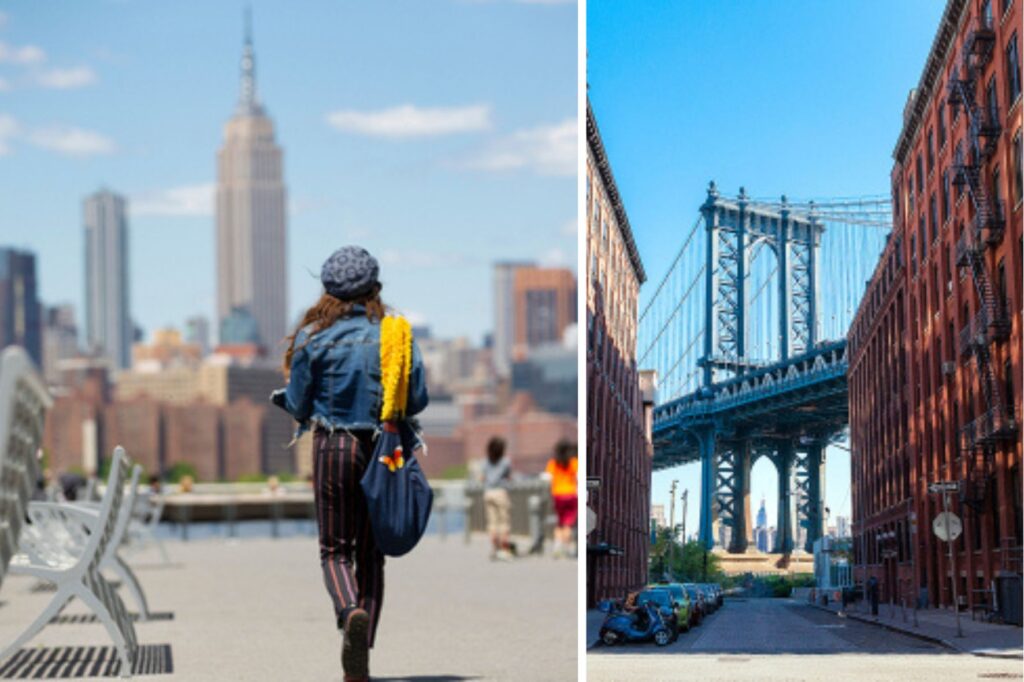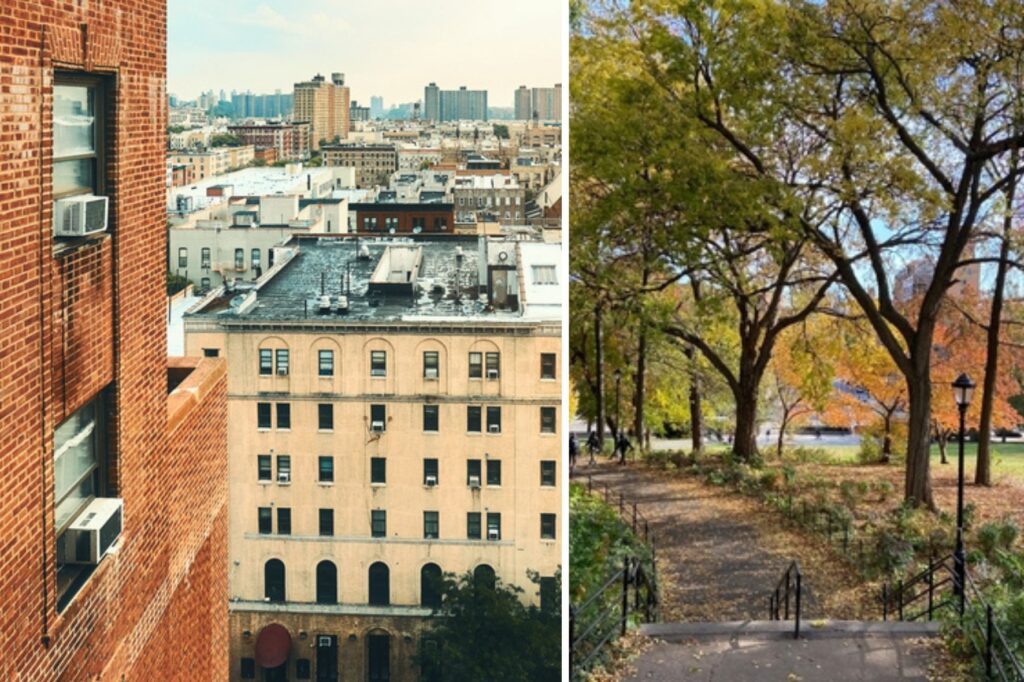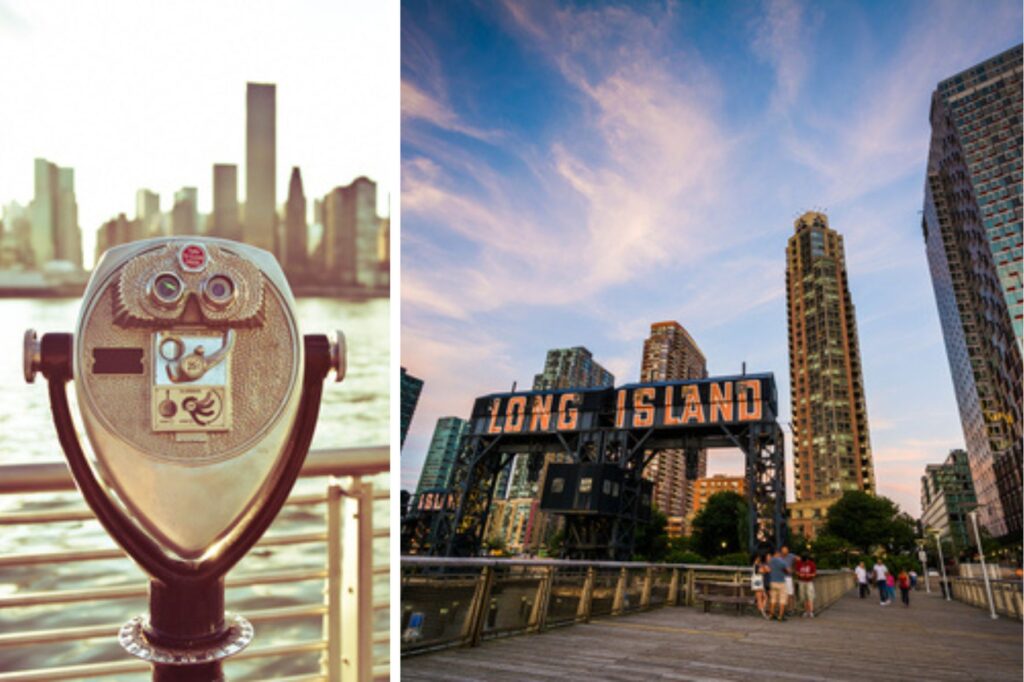Where to stay in New York for long periods
Deciding where to stay in New York can be challenging. But, with this guide we have prepared for you, you will find your ideal New York spot.
Digital nomads, remote workers, international students, and travelers moving at their own pace are always wondering where to stay in New York. If that sounds like you, you’ll definitely enjoy this article.
New York speaks for itself: it’s a city that’s always alive, diverse, fast-paced, and packed with opportunities. While it’s one of the dream destinations for many, it can also feel overwhelming, especially if it’s your first time. If you’re planning to stay for a while to study, work remotely, or just soak in the New York experience at your own pace, it’s a good idea to think about things like getting around, where to stay, and which areas are safe (or not) before you settle in.
Today, we’re tackling one of the biggest challenges: finding accommodation in New York, which can be tricky, especially if you’re not sure where to look. In this article, we’ll guide you through the best areas for extended stay in New York and the types of accommodations that are actually worth considering.
Whether you prefer a coliving space in Brooklyn, a furnished studio in Manhattan, or a residence near the subway in Queens, this guide will help you find the perfect spot to live out your own New York story.
Where to stay in New York? The best options for long stays
Before you start looking for a place to stay in New York, it’s important to understand a bit about how the city is organized. New York is made up of five boroughs: Manhattan, the Bronx, Brooklyn, Queens, and Staten Island. The most popular and frequently visited by tourists are Manhattan, Brooklyn, and Queens, with Manhattan being the priciest and most in-demand by travelers. Each borough is made up of several neighborhoods, creating a vast and diverse city.
Each borough in New York offers a variety of options for those staying longer, from modern colivings to hotels with monthly rates, furnished apartments, and residences for students or professionals. However, if you’re wondering whether it’s expensive to stay in the city, the cost of living is high, which is reflected in accommodation prices. For instance, in a standard hotel located a bit outside the city center, you could expect to pay around $150 per night.
Which is the best option for your needs? Read on and find out more.
Coliving in New York
They’re perfect for young professionals who frequently relocate and want to connect with like-minded people. These places usually welcome travelers from all over the world and offer a range of services, from private or shared rooms to coworking spaces, common areas, and even workshops and events for networking. As a result, they’re one of the best accommodation options in New York for digital nomads and remote workers.
If you want to learn more about the benefits of this type of accommodation and discover 10 great options, we recommend checking out our article on the best colivings in New York. But in general, you can look in areas like Lower Manhattan, Midtown, Harlem, Chelsea, and Queens, which offer plenty of options and are well located.
Coliving offers a major advantage over traditional housing: flexible contracts with stays ranging from weeks to months. This means you can skip the hassle of apartment hunting and managing utilities, as things like Wi-Fi, electricity, and water are usually included in the monthly fee.
- The estimated monthly price of a coliving in New York is around $1,200-2,200 per month, all inclusive. We suggest looking at websites such as Common, Outpost Club, The CoLiving, Ollie and Roomrs.
Furnished apartments
If you value privacy, a furnished studio or apartment could be a great accommodation option in New York. There are plenty of choices available, all ready for you to move in, and they usually include services like Wi-Fi, so all you need to do is show up with your bags and settle in. These places offer flexible contracts, though some may require a minimum stay of three months or more.
Another thing to keep in mind is that the requirements may be more demanding (compared to something like Airbnb, for example). They might ask for your credit history, a letter from your employer (if you’re working), references, and a security deposit.
To find and compare prices you can search Blue Ground, Landing, June Homes, Zumper and RentHop.
- The estimated monthly cost of a studio apartment in New York can range from $2,000-3,200 per month, while a one-bedroom apartment is around $2,800-4,500.
As you can see, this option tends to be pricier than coliving, so it’s a good idea to start your search early, consider different options, and find the best price. New York is expensive, but with proper planning, some time, and patience, you’ll be able to save a bit and enjoy a comfortable life.
Seasonal Airbnb
A popular city like New York goes hand in hand with a popular rental platform like Airbnb. The options available on their site are extensive. Plus, just like in many other cities, many hosts offer discounts for stays longer than 28 days.
Who do we recommend Airbnb for? For travelers who have just arrived in New York and need temporary accommodation while they search for a more permanent place. Almost all listings include amenities and don’t require a contract.
- The estimated monthly price of renting through Airbnb in New York can range from $2,500-4,000, depending on the neighborhood and size.
Hotels with long-stay rates
Hotels offering discounts for long stays in New York are a very convenient option if you’re looking for comfort, no paperwork, and services included (like housekeeping, laundry, or even breakfast). And yes, there are special rates for those staying several weeks or months, which can be quite competitive compared to a premium Airbnb.
These types of hotels are known as “extended stay hotels” or apart-hotels. Many come with fully equipped kitchens, studio or apartment-style layouts, and are designed for travelers staying more than a week. They don’t require contracts or deposits, and include services like weekly cleaning, laundry, and in some cases, allow you to adjust your dates without penalties.
Some popular hotel chains that offer this type of accommodation include Extended Stay America, Sonder, Blueground, Residence Inn by Marriott, and Homewood Suites by Hilton. Also, many independent boutique hotels in Brooklyn or Queens offer direct discounts for stays longer than 28 days (pro tip: reach out to the hotel directly by email, and you’re likely to get a better rate).
On platforms such as Booking, Kayak or Expedia you can filter by “long stays” or search for weekly/monthly promotions.
- What is the estimated monthly price of staying in a hotel in New York for a long stay? It can range from $2,800-4,500, with weekly promotions or monthly packages.
Residences for students and professionals
Student residences in New York are a hidden gem for long-term stays, even if you’re not a student. Why? Some are open to the general public, especially during the off-season. They also welcome travelers coming to the city for short language courses or cultural programs. After all, New York has a huge community of international students, interns, and young professionals. For them, this type of accommodation is ideal, particularly if they’re on a budget.
Of course, with this type of accommodation, you’ll need to adapt to certain rules (like visiting hours, quiet times at night, or shared kitchens). In many cases, the rooms have shared bathrooms, and the spaces aren’t particularly luxurious.
Some examples of student and professional residences in New York include Educational Housing Services, which accepts students and short-term program visitors with locations in Manhattan and Brooklyn; The Webster Apartments, an all-female residence ideal for long stays (located in Midtown); and The New Yorker Residence, also in Midtown. You can also explore options at International House NYC, Educational Housing Services (EHS), NYU Housing, and Columbia University Residences.
- The estimated monthly price is around $900-1,500, with all services included.
Stay connected from New York
If you’re traveling to New York to study or work, having a reliable connection from day one will be essential. Even as a tourist, you’ll need it to check maps, read reviews on Google, and share your adventures on social media. We recommend getting an unlimited data plan with Holafly Connect. That way, you won’t have to rely on public Wi-Fi networks, which can be insecure and unreliable in a city like New York. Plus, you won’t be limited to just having internet access in your accommodation. With this service, you’ll stay connected wherever and whenever you need.
Plus, with the unlimited data plan, you can share your internet connection across multiple devices, making it perfect if you work with both your laptop and phone or if you’re traveling with a large group. All of this at a very reasonable price, with no contracts or hassle.
Important: If you are a frequent traveler and want to stay connected without worrying about expensive roaming or looking for a new SIM at every destination, Holafly’s subscription plans are for you. With a single eSIM, enjoy internet in more than 170 countries for a fixed price and no surprises on your bill. Travel without limits and connect easily and securely! 🚀🌍

Where to stay in New York? The best neighborhoods and areas to live for a period of time
Let’s now look at the best neighborhoods to stay in if you’re planning a longer stay in New York. The city is more than just one place—it’s a collection of different areas, each with its own vibe and character. From the fast-paced energy of Manhattan to the artistic and laid-back atmosphere of Brooklyn, or the practicality of Queens, each neighborhood offers something unique. Because of this, choosing where to stay can be tricky. You’ll want to explore all the options, weigh the pros and cons, and consider important factors like safety and public transport. The key is to take your time and think carefully about where you’ll call home in New York.
Most people visiting New York for the first time tend to stay around Times Square (in the heart of Midtown), since it’s one of the city’s most famous landmarks and a great spot to explore the main attractions. This works well for tourists. However, if you’re staying longer, it might not be the best choice. You’ll be right in the center of the action, which means prices for even basic accommodations will be higher.
Let’s dive right in and explore the best neighborhoods to stay in New York. We’ll provide you with three great options (including some accommodation suggestions), so by the end of this article, you’ll feel more prepared to decide where to live in this amazing city. We want your experience to be truly memorable, which is why we’re here to help with finding the perfect place to stay during your time in New York.
Williamsburg (Brooklyn)
Williamsburg is a trendy, creative neighborhood with great connections, making it ideal for digital nomads, creatives, and young couples. It’s one of the coolest areas in Brooklyn, packed with cafés offering fast Wi-Fi, boutique coworking spaces, independent clothing stores, and organic food markets. It’s perfect if you’re looking for a sense of community and style without being too far from Manhattan. Plus, it still holds an authentic vibe—while it attracts plenty of tourists, it maintains its local feel.
During your free time, you’ll find plenty to do in the area. If you’re looking for green spaces to relax, stretch, or work out, McCarren Park and East River State Park are great options. There are also many markets, art fairs, and bars where young locals gather after work. The social scene is lively, with plenty of events happening on weekends, so there’s always something to enjoy!
A bonus: If you stay here, you’ll get to enjoy stunning panoramic views of New York. And if you’re concerned about getting around the city, don’t worry—it’s easy to reach the city center via the L subway line, the Midtown ferry, or a wide network of buses. Plus, it’s a great area for biking.
Accommodations in Williamsburg
One of the major perks of this neighborhood is the wide range of reasonably priced accommodation options. From boutique hotels to spacious, fully equipped apartments—many of which are housed in historic Brooklyn buildings. The monthly budget you’ll need to set aside to stay in Williamsburg can range from $2,800 to $4,000, depending on the type of accommodation. Here are some recommendations:
- Colivings in Williamsburg: There are a few great choices. One is The Williamsburg House by Outpost Club, located in a modern building, offering private rooms and shared spaces like a movie theater, game room, and a furnished rooftop. Another option to consider is Roomrs Williamsburg, which provides fully furnished rooms in shared apartments with all-inclusive services.
- Hotels with extended stay rates: There are several great options to consider, such as Pod Brooklyn, located in the heart of Williamsburg. This hotel offers minimalist, modern rooms and is known for its affordable rates and proximity to local attractions. Another option is Sonder at The Industrialist, which combines hotel amenities with a homey feel, making it perfect for a longer stay in the city.
- Furnished apartments: For instance, in Williamsburg, Blueground Apartments offers fully furnished apartments, from studios to two-bedroom units. Each apartment is stylishly designed, with modern furniture, a fully equipped kitchen, and amenities like high-speed Wi-Fi. Another great option is June Homes, which provides flexible rental agreements for furnished apartments without the hassle of long approval procedures.

Harlem (Manhattan)
Harlem, located in the northern part of Manhattan, is a popular area for travelers looking to take advantage of more affordable prices. It’s perfect for students on a budget and digital nomads, as there are plenty of appealing coliving options available.
Harlem has a strong identity rooted in African American history, jazz, and neighborhood life. While it doesn’t have major tourist attractions, simply walking through its streets is an experience in itself. You’ll find plenty of historic churches, independent bookstores, cozy cafes, live music, street art, and the famous Jazz Museum. In other words, it’s perfect for staying in a more residential and peaceful area, all while remaining in Manhattan.
Tip: Want to experience something unforgettable in Harlem? Go to a gospel service (just like in the movies) and enjoy a real Afro-American musical performance.
Harlem has excellent connections to the A, B, C, D, 2 and 3 subway lines, which take only 20 minutes to reach downtown New York City.
Accommodations in Harlem
As we mentioned earlier, Harlem offers more budget-friendly accommodation compared to other parts of Manhattan, with options ranging from $2,000 to $3,200 per month. You can find a variety of choices here, including colivings, Airbnb rentals in historic homes, monthly discounted hotels, and student residences for internationals. Let’s explore a few examples:
- Coliving in Harlem: Harlem has a wide range of coliving options. We recommend Outpost Club Harlem House, which offers private rooms in shared apartments, fully furnished with all utilities included. Another great option is SharedEasy Harlem, which offers similar accommodations and also gives you unlimited access to gyms and coworking spaces throughout the city. Both are ideal for young professionals and students looking for a community-driven living experience.
- Hotels with long-stay rates: While the hotel options in Harlem aren’t as plentiful as in other parts of Manhattan, there are still some great choices if you prefer to stay in a hotel. For example, Aloft Harlem is a modern space offering special rates for extended stays. On the other hand, Northern Lights Mansion is a boutique hotel that blends historic charm with modern amenities. It offers discounted rates for long stays and is located in a quiet area of Harlem.
- Furnished apartments in Harlem: We recommend The Harmen Cascades, which offers apartments in various sizes, from studios for one person to units that can accommodate up to five residents, making it an ideal choice if you’re traveling with company. Additionally, it has parking spaces, which is not always easy to find.
- Residences in Harlem: For international students and remote workers, there are several great housing options in this New York neighborhood. One of them is The Heritage House, which offers modern and comfortable apartments near libraries, cafes, and cultural centers. There’s also The Towers at City College of New York, located on the City College campus, and McLaughlin East Harlem Residence, offering studio-style apartments.

Where to stay in New York? Long Island City (Queens)
Looking for a modern, quiet neighborhood with postcard-worthy views? Long Island City is the perfect place to stay in New York. This area blends residential tranquility with a modern vibe, plus it offers exceptional views of the Manhattan skyline. In recent years, it’s seen significant growth with new high-rises, organic grocery stores, and coworking spaces. It’s definitely ideal for digital nomads or anyone studying or working in Manhattan.
Long Island City is a neighborhood in Queens, the largest borough in New York, known for its incredible cultural and ethnic diversity. It’s also very conveniently located, easily accessible by subway or ferry across the East River, and it’s considered one of the safest areas in the city, second only to Staten Island. This is definitely a big advantage, as safety is often one of the top concerns for travelers arriving in New York.
Long Island City is located next to the East River and is hands down the top neighborhood in Queens. It offers affordable hotels, lovely green spaces by the water, charming minimalist cafés, yoga studios, and a variety of art galleries. In terms of transportation, the 7, E, G, and M subway lines run through here, and you can easily hop on the ferry to Midtown in less than 10 minutes.
Long Island City accommodations
Long Island City tends to be a bit pricier than Harlem. You’ll need to budget around $2,600-3,800 if you’re planning to stay in this area. There are several modern colivings, Airbnb options, business hotels tailored for long stays, and fully furnished apartments with all amenities. Here are a few interesting options to consider:
- Coliving in Long Island: The area offers some great coliving options, such as Common at The Lanes, which provides shared suites and luxury apartments with private rooms and fully equipped common areas. Another good option is Shared Easy Long Island City, offering furnished apartments along with access to gyms and coworking spaces.
- Hotels with extended stay rates: For those who prefer the comfort and services of a hotel, TownePlace Suites New York is designed for extended stays, offering suites with full kitchens and free Wi-Fi. Plus, the views of Manhattan are an added bonus. Another great option is Extended Stay America, which provides rooms with fully equipped kitchens and services tailored for long stays, such as on-site laundry and complimentary breakfast.
- Long Island City student residences: There are also plenty of options for students and workers looking for this type of housing. The New York Institute of Technology (NYIT) Residence Hall, located just 10-15 minutes from the NYIT campus, offers amenities like study rooms, a gym, laundry facilities, a pool, and transportation between the residence and campus. Another great option is Long Island University (LIU) Post Campus Residences, located on a 330-acre campus on Long Island’s Gold Coast, with several residences that offer exceptional amenities.

Living in New York for a while is more than just moving to an iconic city—it’s about immersing yourself in a rich cultural experience, with unique opportunities to work, study, create, and connect with people. We hope this guide helps you find the perfect place in one of the most exciting cities in the world. New York doesn’t slow down for anyone, but it’s always ready to welcome those looking to make it their home. Now that you have the guide, all that’s left is to take the leap.
Frequently asked questions about where to stay in New York
The best neighborhoods for coliving in New York are Chelsea, Midtown, Brooklyn, and Williamsburg. These areas offer great connectivity to the rest of the city, close proximity to cultural spots and green spaces, as well as a wide variety of cafés, restaurants, and shops.
New York has many great neighborhoods to live in. However, if you prioritize a balance of quality of life, good connectivity, and reasonable prices, Harlem is the place to go. It’s located in Manhattan, close to everything, but offers a strong local community, cultural options, a peaceful environment for studying or working, and more affordable rents compared to central areas.
Yes, both neighborhoods are safe to live in, especially if you stay in the more residential and busy areas. However, like any big city, it’s important to take basic precautions. That said, the neighborhoods we recommend in this article are safe for living.
Although New York is massive, the city has a very efficient public transportation system. The subway runs 24/7, and there is a large fleet of buses, ferries, and bikes. So, you don’t need a car to get around — just a monthly MetroCard ($132) will give you unlimited travel.
Yes, especially if you’re living in a coliving space, residence, or renting through platforms like Blueground or Airbnb, which don’t require a SSN. On the other hand, traditional long-term rental contracts usually ask for it, along with a credit history.





 Language
Language 


















 No results found
No results found







